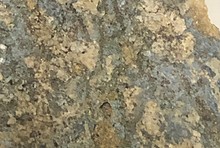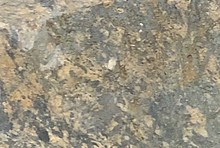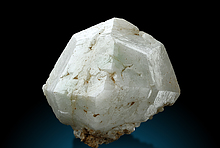Home PageAbout MindatThe Mindat ManualHistory of MindatCopyright StatusWho We AreContact UsAdvertise on Mindat
Donate to MindatCorporate SponsorshipSponsor a PageSponsored PagesMindat AdvertisersAdvertise on Mindat
Learning CenterWhat is a mineral?The most common minerals on earthInformation for EducatorsMindat ArticlesThe ElementsThe Rock H. Currier Digital LibraryGeologic Time
Minerals by PropertiesMinerals by ChemistryAdvanced Locality SearchRandom MineralRandom LocalitySearch by minIDLocalities Near MeSearch ArticlesSearch GlossaryMore Search Options
The Mindat ManualAdd a New PhotoRate PhotosLocality Edit ReportCoordinate Completion ReportAdd Glossary Item
Mining CompaniesStatisticsUsersMineral MuseumsClubs & OrganizationsMineral Shows & EventsThe Mindat DirectoryDevice SettingsThe Mineral Quiz
Photo SearchPhoto GalleriesSearch by ColorNew Photos TodayNew Photos YesterdayMembers' Photo GalleriesPast Photo of the Day GalleryPhotography
╳Discussions
💬 Home🔎 Search📅 LatestGroups
EducationOpen discussion area.Fakes & FraudsOpen discussion area.Field CollectingOpen discussion area.FossilsOpen discussion area.Gems and GemologyOpen discussion area.GeneralOpen discussion area.How to ContributeOpen discussion area.Identity HelpOpen discussion area.Improving Mindat.orgOpen discussion area.LocalitiesOpen discussion area.Lost and Stolen SpecimensOpen discussion area.MarketplaceOpen discussion area.MeteoritesOpen discussion area.Mindat ProductsOpen discussion area.Mineral ExchangesOpen discussion area.Mineral PhotographyOpen discussion area.Mineral ShowsOpen discussion area.Mineralogical ClassificationOpen discussion area.Mineralogy CourseOpen discussion area.MineralsOpen discussion area.Minerals and MuseumsOpen discussion area.PhotosOpen discussion area.Techniques for CollectorsOpen discussion area.The Rock H. Currier Digital LibraryOpen discussion area.UV MineralsOpen discussion area.Recent Images in Discussions
Techniques for CollectorsPreventing Dehydration
15th Mar 2012 20:30 UTCDavid Bernstein Expert
I have been digging a hole at an old copper mine for several years. Recently, I hit a large area of thick mud. Mixed in with the mud are beautiful partially solidified pieces of Chrysocolla, Pseudomalachite, Azurite and other copper secondaries. Some of the pieces break apart immediately. Some are large enough to take home and wash. And they do look nice for a period of time. But invariably, the pieces dry out, the color fades and they crumble into dust. I'll tell ya, it's really depressing. Because if I could preserve them somehow, I think they would rival anything(Cu wise) found in New Jersey in a long time excluding Native Copper. The pieces I am writing about will be obvious from in the attached picture.
Anyway, if anyone has any helpful ideas, I'd be glad to read them. Many thanks.

15th Mar 2012 20:45 UTCAlfredo Petrov Manager
I keep some dehydration-prone rare minerals in sealed glass jars with a bit of water (and things added to the water to stop bacteria and mold growing in it), or in plastic film containers, but that's probably not practical for your specimens as they seem rather larger in size than what I typically keep. Perhaps a humidifier might help? Some guitar players in dry environments keep a container with a moistened sponge inside their guitar cases to keep the wood from cracking - perhaps something like that might help inside a mineral display case too? One thing that does not work well over the long term is lacquering specimens.
15th Mar 2012 21:33 UTCDavid Bernstein Expert
Thanks for addressing lacquer. I always wondered about that.
16th Mar 2012 00:37 UTCReiner Mielke Expert
16th Mar 2012 02:02 UTCDavid Bernstein Expert
16th Mar 2012 07:33 UTCTrevor Dart
16th Mar 2012 12:42 UTCDavid Bernstein Expert
Here is another shot. The piece on the left has yet to be washed. The others soaked overnight and then I scrubbed them this morning. The mud is very stubborn.




Mindat.org is an outreach project of the Hudson Institute of Mineralogy, a 501(c)(3) not-for-profit organization.
Copyright © mindat.org and the Hudson Institute of Mineralogy 1993-2024, except where stated. Most political location boundaries are © OpenStreetMap contributors. Mindat.org relies on the contributions of thousands of members and supporters. Founded in 2000 by Jolyon Ralph.
Privacy Policy - Terms & Conditions - Contact Us / DMCA issues - Report a bug/vulnerability Current server date and time: April 23, 2024 08:06:10
Copyright © mindat.org and the Hudson Institute of Mineralogy 1993-2024, except where stated. Most political location boundaries are © OpenStreetMap contributors. Mindat.org relies on the contributions of thousands of members and supporters. Founded in 2000 by Jolyon Ralph.
Privacy Policy - Terms & Conditions - Contact Us / DMCA issues - Report a bug/vulnerability Current server date and time: April 23, 2024 08:06:10











